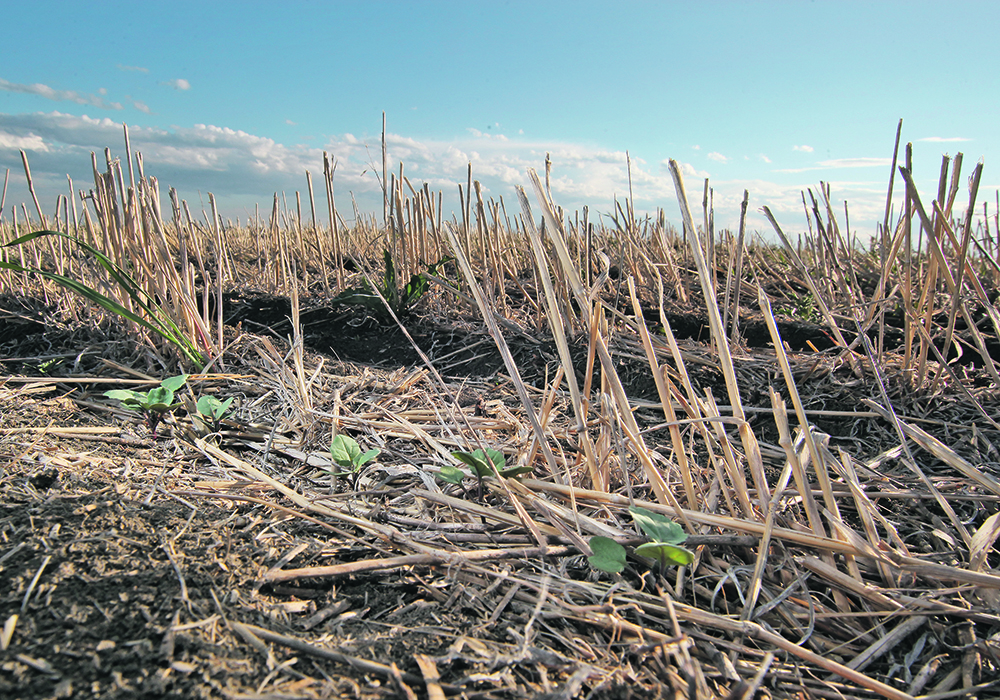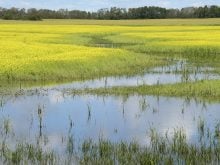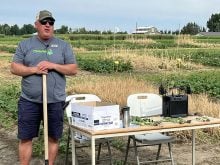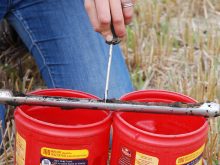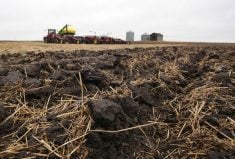Soil health on First Nations land should be part of a national soil strategy, witnesses told the Senate agriculture committee last week.
Because much of the farmland owned by First Nations is leased to other farmers, the data associated with that soil isn’t necessarily available.
Melissa Arcand, a soil biogeochemist at the University of Saskatchewan and member of the Muskeg Lake Cree Nation, said the lack of information combined with the few First Nations students in the soil science and agricultural fields puts soil health on reserve lands at risk.
Read Also

Canadian Food Inspection Agency extends chronic wasting disease control program consultation deadline
Date extended for consultation period of changes to CWD program
“While many producers who farm First Nations land may be collecting soil data to guide fertilizer applications, results of soil tests are not commonly shared with the First Nation,” she said during her testimony. “Resources are needed to support soil data collection and management by First Nations for their own lands. Initiatives and soil data management developed through a national soil health strategy could be modelled and applied for First Nations use.”
Arcand said there is a dearth of information about demographics and land use.
“We don’t even necessarily know the exact extent to which First Nations farmers are farming land versus non-First Nations farmers,” she said, adding First Nations also don’t know how lease agreements and practices may be affecting soil health or degradation on their lands.
There is a data gap, she said.
Candice Pete-Cardoso, director of the Indigenous Land Management Institute, also at the U of S, said First Nations people don’t commodify land or value it solely on its potential to generate revenue. She is a member of Little Pine First Nation.
“Land is viewed as a living, breathing ecosystem and territory, a kin connection and a place that we must learn from, nurture and sustain,” she said.
Committee chair Robert Black asked what recommendations they could make to address First Nations soils.
Arcand said one would be for government to tackle the policy gaps.
“Specifically, the way that the funding formula works with Indigenous Services Canada to First Nations, it can actually incentivize the breaking of marginal land for crop production, because the band will receive more funding if they’re able to issue more permits or the land base of the permit is larger, and that actually risks soil health. We need to plug that policy gap,” she said.
Another would be to develop better relationships to ensure land access. Arcand said the Saskatchewan government’s sale of crown land is a lost opportunity for Indigenous people to take care of that land and perhaps repatriate more bison.
Pete-Cardoso said more and better training of First Nations land managers is critical. She said resource allocations for training under some programs only permit one trainee per nation and that should change to better meet a nation’s needs.
She also said the policy that incentivizes breaking lands to earn more money is wrong.
Saskatchewan senator Marty Klyne suggested that some of the lands First Nations lease go to corporate farms.
“You have five or six combines out there and they just go through that. That intensity isn’t good for soil degradation,” he said.
Arcand said the Living Lab that Mistawasis Nehiyawak is leading in Saskatchewan will look at best management practices to deal with soil degradation.
Kenneth Bear, a First Nations professional agrologist and currently the agriculture development manager for Pasqua First Nation Group of Companies, told the committee that when he was a young boy his kookum (grandmother) asked him to eat some of the dirt from the reserve land.
He said he wouldn’t do that today.
“If you want to learn about how to take care of this land, you need to learn what’s being put on it, what is being taken off it and what its productive capacity is,” he said.
“If a farmer looks at a one- or two-year land lease, the assumption is that we’re going to take as much as we possibly can from this short period of time. In relation to pride in ownership, that pride in ownership means that you want it for generation to generation.”
Jacob Beaton, owner of Tea Creek Training and Employment in northwestern British Columbia, operates a farm off-reserve. He said soil health is a key foundation of the farm.
“We are trading our plows and tiller for something called a power harrow or a subsoiler, something they use in Europe to try to reduce the soil strata disturbances and produce an incredible amount of food,” he said.
Beaton said when his ancestors arrived, the area was plains because of the grazing animals such as moose and caribou.
“In fact, there was about two million acres of arable land just in our northwest region that has now gone mostly back to forest because of the lack of those grazing indigenous animals and the stamping out of indigenous land owners,” he said.
“There were a huge number of First Nations-owned ranches and farms here that were seized over time by Indian agents and provincial police and then auctioned off to non-Indigenous settlers basically.”
Both he and Bear said the financing barriers limit the extent to which First Nations can farm their lands.
Beaton is a status Indian but can’t get financing because of what he called institutionalized racism in the lending sector.


